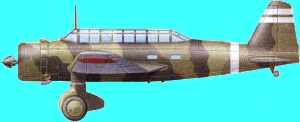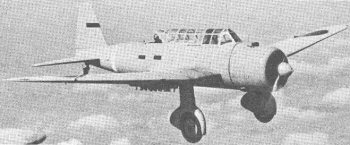Mitsubishi Ki.30 Type 97 ("Ann")


Click HERE to see color drawings of the Ann
This was the first Japanese light bomber to be fitted with a double-row air-cooled radial engine, variable-pitch propeller, internal bomb bay and split flaps. Even so, the Ki-30 (given the Allied codename of "Ann") was not a conspicuous aircraft. It began its operational career in 1938, and while serving in China it served adequately, but that was only because there was little or no air opposition. In the early part of the war it saw service in the Phillipines campaign, but only after Allied fighters had been driven off. Once Allied fighters started to reassert themselves later in the war the losses of Ki-30s increased dramatically. At this point it was retained for crew training purposes, as well as a number that were given to the Royal Thai Air Force. At war's end they joined other obsolete aircraft in suicide operations against the Allies.
Mitsubishi Ki.30 Type 97
Type: Light Bomber
Service: Japanese Army Air Force (JAAF)
Crew: Pilot
Armament: one wing-mounted 7.7mm Type 92 machine gun
one flexible rear-firing 7.7mm Type 92 machine gun
up to 882 lb (400 kg) bombs
Reference: Francillon: 167, Mondey: 208
Specifications:
Length: 33' 11.5" (10.35 m)
Height: 11' 11.75" (3.65 m)
Wingspan: 47' 8.75" (14.55 m)
Wing area: 329.17 sq. ft (30.58 sq. m)
Empty Weight: 4916 lbs (2230 kg)
Max Weight: 7099 lbs (3220 kg)
Propulsion:
No. of Engines: 1
Powerplant: Nakajima Ha-5 KAI 14-cylinder radial
Horsepower: 950 hp
Performance:
Range: 1056 miles (1700 km)
Cruise Speed: 236 mph (380 km/hr)
Max Speed: 263 mph (423 km/hr)
Climb to/in: 16405 ft (5000 m) in 10 min 36 sec
Ceiling: 28115 ft (8570 m)
Production: approximately 704 Ki-30s
Additional information on this aircraft
can be found at Wikipedia
HERE.
For a very nice scale color drawing of this aircraft, see
here.
Additional color schemes for this aircraft can be found here.
If you don't see the table of contents at the left of your screen, CLICK HERE to see the rest of this website!